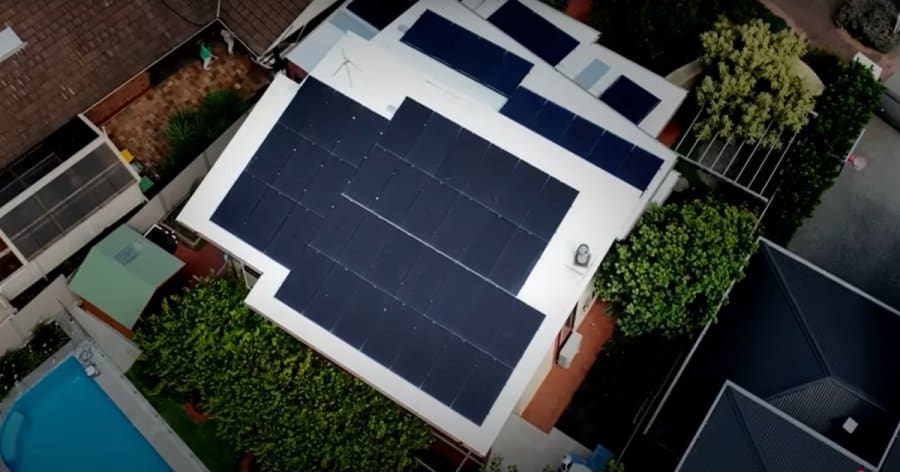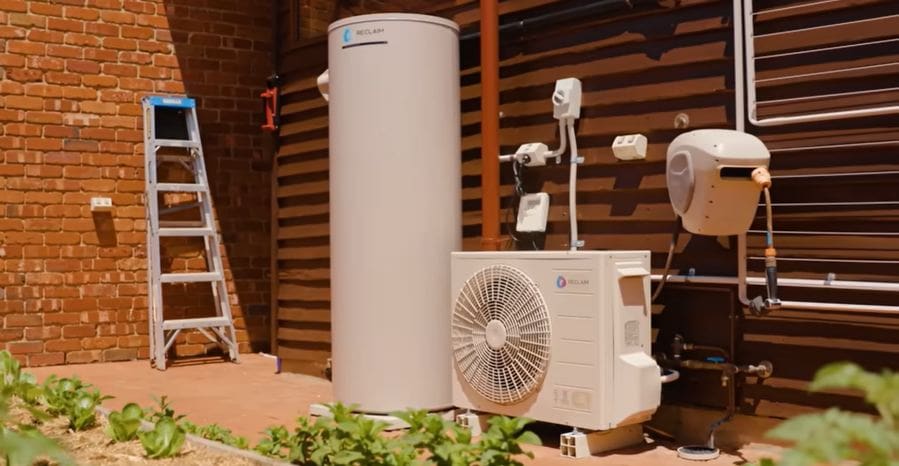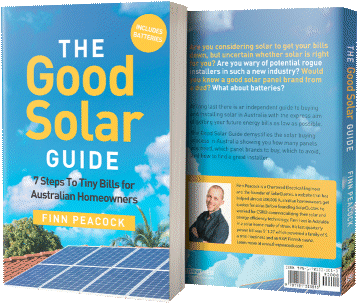Here’s what you need to know when it comes to buying the right and right number of solar panels for your home in 2025 — and discover the biggest mistake to avoid.
Clarifying Units Of Measurement
It’s first worth briefly explaining a few relevant terms many people still get confused – Watt (W) and Watt-hour (Wh), and kilowatt (kW) and kilowatt-hour (kWh).
- Watt1 is a measure of instantaneous power.
- Watt-hour is a measure of energy generated or consumed over time.
- There are 1,000 Watts in a kilowatt.
- There are 1,000 Watt-hours in a kilowatt-hour. When you look at your electricity bill, you’ll see you are charged in kilowatt-hours for mains grid consumption.
To use round numbers for the sake of simplicity, a 500-Watt (500 W) solar panel (its power rating or capacity) operating under ideal conditions for 4 hours generates 2 kilowatt-hours (2 kWh) of electrical energy:
4 (hours) x 500 (W) = 2,000 Watt-hours (Wh) or 2 kilowatt-hours (2 kWh).
How Much Solar Panel Capacity Do You Need?
How many solar panels, or how much capacity you’ll need to keep your electricity right bills down all year round is probably more than you think.
The typical Australian household consumes about 16-20 kilowatt-hours of electricity per day. Using the example of 500-Watt solar panels each producing 2 kWh of energy a day would mean 10 panels should be enough.
But it isn’t.
Those 10 solar panels might produce enough electricity to power through the middle of a sunny summer’s day. But then there’s winter, overcast days, mornings and evenings to consider; along with other factors impacting efficiency. A system should be sized to get you through winter, and not just an average day.
You will very rarely hear anyone complain of having too many solar panels — but you’ll often hear system owners wishing they had more; and this is the biggest mistake people make. SolarQuotes founder Finn Peacock’s advice is completely fill your north, west and east-facing roof with panels if you can.

Fill ‘er up! The rooftop of Finn’s house.
A good installer will evaluate your household energy consumption profile and recommend a system size suited to your needs and circumstances.
What To Do With Surplus Solar Energy
The goal is to catch as many of the sun’s rays as possible — particularly in the early mornings, late afternoons and evenings, and especially during winter. And you do that with a large system, which means you’ll likely have surplus solar energy at other times.
Any surplus solar power generated by your panels is usually automatically diverted/exported to the mains grid by your solar inverter, and you will receive a credit for that on your electricity bill if you’re on the right energy retailer plan. This is called a feed-in tariff.
But generally speaking, feed-in tariff rates aren’t anywhere near as generous as they were during the early days of Australia’s rooftop solar revolution when systems were much more expensive. Think of feed-in tariffs as a nice bonus, rather than as the primary reason for installing a system. The real value of a solar system is from self-consumption to avoid paying for mains grid electricity.
There are other things you can do with surplus solar power to maximise its value, among them:
- Get a home battery to store energy for use in the mornings, evenings and other times when the sun isn’t shining. And with a national federal government battery rebate on the way, it’s a good time to consider this.
- If you have electric hot water system, move your water heating to the middle of the day using a timer (or a PV diverter). If you have a gas service, consider replacing it with an electric one at the end of its life (or better still, a hot water heat pump) and doing the same. Basically, use a hot water system as a battery.
- Make your next car an electric vehicle, get a home EV charger and enjoy super-cheap top-ups courtesy of your solar system.

A hot water heat pump system
You can also have your inverter set so it won’t export surplus if it really bothers you. But if you’re using all the solar energy you can, don’t fret too much about “wasting” surplus. It’s a bit like having full rainwater tanks that overflow when there’s more rain; and you don’t even get any feed-in tariffs for that spilled water.
Which Solar Panels Are Best To Buy?
For most households, panel specifications such as efficiency, temperature-coefficient and degradation aren’t something to spend too much time worrying about if you simply buy a good brand — but view the video above or this solar panel guide for more detail on those aspects if you want to learn more2.
“Good” doesn’t mean expensive these days, with the better budget brands offering very affordable high-performing panels with 25-year warranties. In fact, Finn recently posted about why premium solar panels are dead.
To help you choose and to whittle down any choices you may already have, Finn has put the solar panel brands he trusts on this chart; with the cheaper panels to the left, more expensive to the right.
While good solar panels are important, so too is installation; so be sure to get them well-installed by an appropriately qualified local who’ll be there for you in the unlikely event you need to claim on warranty. And there’s more to a good system than just the panels. On that note, learn everything you need to know about buying a solar power system here.
Footnotes
- Fun fact: Watt has an upper-case ‘W’ because units of measurement derived from proper names are capitalized, and the unit “Watt” is named after the physicist James Watt. But other prefixes such as “kilo” are not capitalised. ↩
- You can also check out our solar panel comparison table to compare specifications and estimated pricing of various models side-by-side. ↩

 RSS - Posts
RSS - Posts



Hi Michael, nice little overview for newbies. But let’s keep SQ totally accurate. SI unit names are written in lowercase, e.g. “watt”, “newton”. The SI symbols for units derived from people’s names are in uppercase, e.g. W, N. And the symbols are just that, language-independent internationally-recognized symbols, not english abbreviations. The full disaster can be read at https://www.bipm.org/en/measurement-units
Good advice re solar panels. You may be able to get higher FITs – though usually with pricey grid prices and daily tariffs. So you need a larger system, preferably three phase to maximise feed in capacity, and a lower peak/shoulder usage to not wipe out the benefit of the higher feed in. My setup – a 9.3kw three phase system, 12c a kwh FIT, NRMA 10% discount and low daily use currently – means healthy monthly refunds despite high charges.
Usage will increase significantly soon so I will install more solar.
The other recommendations are situational. I will install two resistive hot water systems on the new home I am completing on the property. They will be on timers in a very sunny locality. Heat pumps make no financial or environmental sense for me.
A battery also looks a good choice now.
An EV would be worth considering since I would charge at home but not until my current vehicle needs changing.
Fortunately, I have a good installer.
Hi Patrick,
Ronald tells me that 12c FIT is pretty good but it likely won’t last. Everyone is going to low FIT & low energy tariffs generally during the day.
Using an arbitrary 15kWh/100km fugure, 12c forgone FIT would be $1.80… and in Victoria where some are only getting 0.04c/kWh FIT that equates to about 6 cents per 100km.
I suspect many people don’t realise the value in EVs yet, but preserving the invested energy in an existing car is still a good option.
Anthony – two good points. I agree it won’t last. When it falls I will need to reevaluate my electricity plan choice as the relatively high FIT is the only reason this plan works.
This and other developments in EVs such as lower prices, greater range, more choice – particularly sedans and wagons, not more bloody utes and SUVs please! – could cause a rethink in my car purchase timing.
So a good point about the of EV vs FIT.
Thanks
No worries Patrick,
If you want a laugh, have a look at these little wagons
The locals have taken to souping them up for more range now.
Using the off-grid graph toward the end of:
https://www.abc.net.au/news/2024-05-27/comparing-electric-cars-and-petrol-cars/103746132
it looks like you’d have to drive a new BEV 52,100 km, 100% solar charged, before the avoided CO₂ emissions cancel its embodied energy vs an existing ICE vehicle.
But when my old ICE ute blew up, the new BEV vs new ICE takes only 23,000 solar-charged km to negate the extra emissions of battery manufacture. (I’m nearly half way after 16 months, so soon saving total CO₂ emissions, not just daily.)
If the ICE ute had held up, I’d have waited for a BEV ute. And waiting a bit might have bought more range, as tech advances – that’s a substantial win. But the MG4 + light trailer is very nearly as good as a ute.
Patrick,
I was a firm believer in resistive HWS, even on a new build. The reality now is that with rebates, I feel it is now better value to install a Heat Pump HWS. Just make sure you use a good brand that is quiet & reliable.
I see you talk of more than one HWS. I guess this is because the services are some distance apart. My suggestion for this is to install a big Heat Pump HWS, then feed hot water to a second small (2.4Kw element resistive) HWS on the other bathroom. Then run that via a timer + contactor. The idea is to not waste the cold water in the line, so the main HWS feeds initially cold, then hot water into this ancilliary tank. So this tank will receive 3-4L of cold water that stays in the bottom of the tank as the tap turned on gets hot water from the top of the ancillary tank. Run the heater in the ancilliary tank off a timer+contactor to heat at peak PV time. I guess a 50L tank would be sufficient because all you would heat is the stored cold water from the feeds.
Doug – thanks for the idea of the two tanks. Yes, it is a matter of distance which is quite long. The main bathroom and kitchen, plus an outdoor kitchen are towards the one end of a long rectangle and the ensuite is right at the other end.
Thankfully, the house has been piped for connection between the two in case I ran from a single or combined system but I hadn’t thought of this idea.
Still not sure how it would stack up financially though as I don’t think you get incentives on new builds (RECs on the heat pump?) and I have plenty of excess solar. Heat pumps tend to be less reliable and cost much more to fix too.
If on-grid, it is less critical, but off-grid here, Tony Seba’s words “Size for the trough” ring true. My 65 panels are nominally 27 kW, but produce as little as 1.5 kW in deep overcast. And rain is worse. Sunny day overspill is as material as sun on the concrete drive, i.e less than nothing.
In a run of 8 overcast days, charging the EV is put off, even with 65 panels.
Light overcast can yield 5 kW for a slower charge in that run – if you “Fill the roof”.
Here at 38° S, tilting panels up 40° helps catch the low winter sun, yielding up to 3 times as much as panels at -17°. And a west facing 40° tilted array grabs the last rays of the setting sun, usefully extending hours of production.
The 46 kWh of LiFePO₄ batteries are overkill – 30 kWh could be enough even for off-grid. Even heating with the aircon till 11 p.m., instead of lighting the wood heater, only ran SoC down to 86% overnight. This solar tech easily induces a degree of laziness.
Thanks Michael,
Our installer recommended a modest system with 6.6kW of panels based on our use of electricity for cooking, space heating/cooling and EV charging. Still on gas for hot water for the forseeable future.
Based on ~3 years of data our self-consumption ranges from ~25% in the summer to ~50% in winter, with ~32% for Spring/Autumn. So should we have installed more panels? A few extra panels would likely increase our self-consumption but most of the additional output would be fed into the grid. Financially we’re probably better off spending the money saved on a battery or replacing the HW system with heat pump HW
In Canada, a minimum array of 10 kw is needed due to winter, even when net metered. My 8 year old, 11 kw array makes more power per annum than we use, but I still pay $550 for electricity, due to our delivery and tax costs. The old adage ‘go big or go home’ is one people need to think about in order for a faster return of investment. Going cheap with the thought that ‘you’ll add panels in future’ is crazy and leads to lost long term payback revenue.
The size required really does depend on where you are tropical, sub tropical, cold climate, lots of rain and cloud etc), siting, overshadowing, energy usage, feed in tariffs electricity prices, government subsidies, connection type (single or three phase, time of use charging, smart metering and feed in management etc), EV charging or not and whether your requirements are likely to change in the future.
In my current circumstances living in a sub tropical place I have plenty of excess solar, am on TOU three-phase power and 9.3kw of solar with no demand management and get a high FIT of 12c/kw/h – but that will reduce in the future. But I pay high peak and daily supply rates although I still end up really well in front. I expect my future demand to increase significantly though.
It is not always a “bigger is better” issue although small systems say, less than 6kw in a well sited higher gain area are probably less is than advisable in most cases.